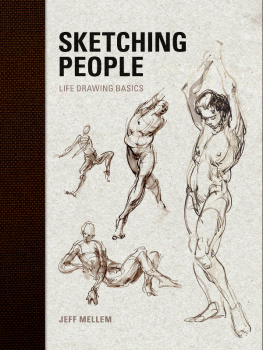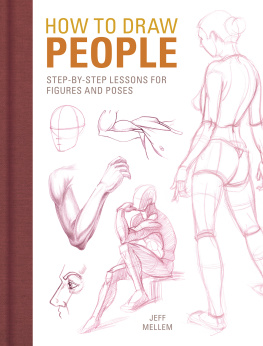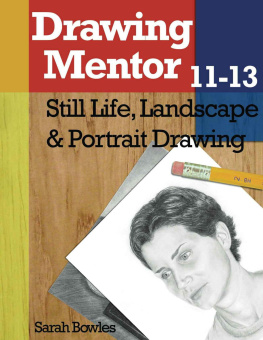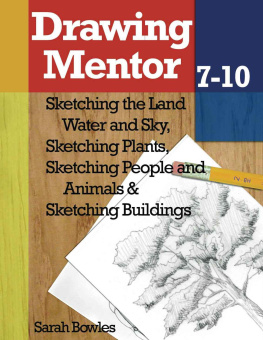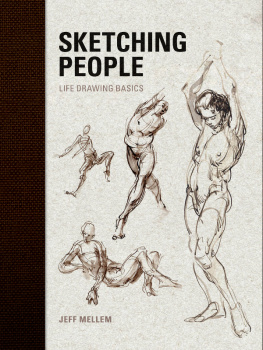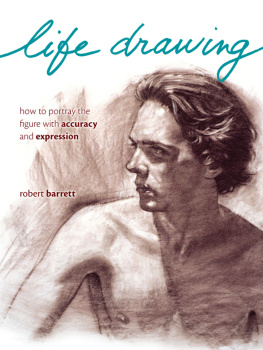
SKETCHING
PEOPLE
LIFE DRAWING BASICS

JEFF MELLEM

NORTH LIGHT BOOKS
CINCINNATI, OHIO
WWW.ARTISTNETWORK.COM
SKETCHING PEOPLE: LIFE DRAWING BASICS. Copyright 2009 by Jeff Mellem. Manufactured in China. All rights reserved. No part of this book may be reproduced in any form or by any electronic or mechanical means including information storage and retrieval systems without permission in writing from the publisher, except by a reviewer who may quote brief passages in a review. Published by North Light Books, an imprint of F+W Media, Inc., 4700 East Galbraith Road, Cincinnati, Ohio, 45236. (800) 289-0963. First Edition.
Other fine North Light Books are available from
your local bookstore, art supply store or online
supplier. Visit www.fwmedia.com.

13 12 11 10 09 5 4 3 2 1
DISTRIBUTED IN CANADA BY FRASER DIRECT
100 Armstrong Avenue
Georgetown, ON, Canada L7G 5S4
Tel: (905) 877-4411
DISTRIBUTED IN THE U.K. AND EUROPE BY DAVID & CHARLES
Brunel House, Newton Abbot, Devon, TQ12 4PU, England
Tel: (+44) 1626 323200, Fax: (+44) 1626 323319
Email: postmaster@davidandcharles.co.uk
DISTRIBUTED IN AUSTRALIA BY CAPRICORN LINK
P.O. Box 704, S. Windsor NSW, 2756 Australia
Tel: (02) 4577-3555
Library of Congress Cataloging in Publication Data
Mellem, Jeff,
Sketching people : life drawing basics / Jeff Mellem. -- 1st ed.
p. cm.
ISBN 978-1-60061-150-6 (pbk. : alk. paper)
eISBN: 978-1-44031-747-7
1. Human figure in art. 2. Figure drawing--Technique. I. Title. II. Title:
Life drawing basics.
NC765.M46 2009
743.4--dc22 2009000463
EDITED BY MONA MICHAEL
DESIGNED BY JENNIFER HOFFMAN
PRODUCTION COORDINATED BY MATT WAGNER
ABOUT THE AUTHOR
Jeff Mellem is a professional artist and graphic designer whos worked in many industries over the last decade. Among others, he has designed for magazines, video games and theater. He earned a Bachelor of Fine Arts degree from California State University, Fullerton, and studied drawing at the American Animation Institute in Hollywood, California. Using traditional drawing techniques to create character and story is the foundation for Jeffs work. For more on his work, visit www.jeffmellem.com.
METRIC CONVERSION CHART
| TO CONVERT | TO | MULTIPLY BY |
| Inches | Centimeters | 2.54 |
| Centimeters | Inches | 0.4 |
| Feet | Centimeters | 30.5 |
| Centimeters | Feet | 0.03 |
| Yards | Meters | 0.9 |
| Meters | Yards | 1.1 |
ACKNOWLEDGMENTS
Id like to thank my family for their support while I worked on this book. To my parents, Glenn and April, thank you for valuing education and supporting me in my pursuits. To my brother Danny, thank you for all your brilliant advice and your friendship. To my brother Eric, thank you for always making me laugh and sharing my interest in great stories.
Id also like to thank the whole Aylard family, particularly Todd and Jill, whose love of art and ideas Ive always found refreshing.
Thank you to my friends at National Dragster, who have been helpful and encouraging through the process of developing this book. A special thank-you to Matt Hurd, who helped me with his knowledge of print, and Lorraine Vestal, who copyedited an early version of the book.
A very special thank-you to my teachers, who gave me a solid foundation in art. Thank you, Don Lagerberg at Cal State Fullerton, for teaching how art can tell a story. Thank you, Glenn Vilppu, for teaching the true fundamentals of art.
Id like to thank North Light Books for taking on this project.
Finally, Id like to acknowledge the artists whose work greatly impacted me: Michelangelo, Daumier, Heinrich Kley, Bill Watterson, Chuck Jones, and all the great artists who create life out of lines on a page.
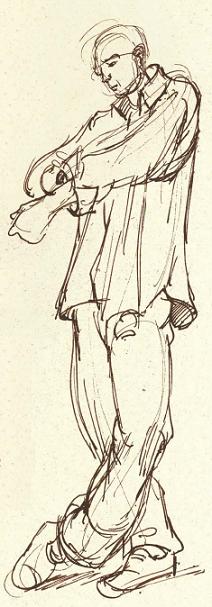
CONTENTS
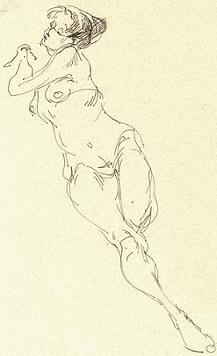
My hope is that by learning the essential principles of drawing you will be free to express your life through your art.
Jeff Mellem
All drawing begins with careful observation. Whether you are looking at a subjects contours, a persons clothing, someones body language or studying anatomy, careful observation comes before drawing.
Gesture is the first step in creating lifelike sketches. The observational skills you developed in the last chapter can be applied when you see an action you want to capture.
If you think of a drawing as a building and gesture as the foundation, the basic formsthe sphere, cube and cylinderare the roof, floor and walls.
We dont encounter very many nudes walking around in public, so understanding the dynamics of cloth becomes important to sketching people from life.
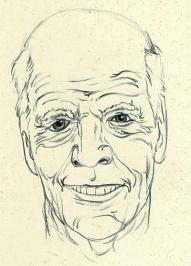
When we look at another person, we usually look first at his or her face. Not only is it how we identify that person, but it is also how we try to determine whether he or she is angry, sad, elated, disgusted or mischievous. It will show in facial expressions.
Drawings begin to take on a life of their own when a figure begins to act out emotions.
For a visual artist, choosing how to depict an eventwhat parts are emphasized and what are downplayed, the angle the scene is depicted from, how close the viewer is brought to the actionis done through staging.
Lights vibrant energy is what creates the subtle shades on a form for our eyes to see.

INTRODUCTION
Every artist dreams of sitting in a caf, opening a sketchbook and being able to capture the characters and beauty we experience in everyday life. For the visual artist, a sketchbook can become a personal journal that not only depicts his or her experiences but also is a private place to produce new ideas and develop technical skill. Unfortunately, sketchbook drawing can be a frustrating experience without a logical procedure for capturing a world that is constantly in motion.
While practicing drawing in an art studio has the advantage of a controlled environment, giving the artist the ability to rein in the subject to his or her desire, drawing from life requires a more reflexive approach to quickly capture and interpret the real world. It requires a spontaneity that only comes from an ingrained mastery of fundamental drawing skills.
The sketchbook is a perfect medium to improve your drawing ability because its portability allows you to draw anywhere and at any time with interesting subjects everywhere you are. The basic principles of drawing are the same no matter where youre working. Principles of line, form, shade, color and composition dont change. However, because you dont have control over your subjects outside of the studio environment, you will have to sharpen certain skills that are otherwise easily downplayed. For example, you cannot dictate how long a couple in an airport holds an embrace, and youll have to capture their gesture very quickly or from memory. In contrast, while working from a model or a photograph, you might be tempted to skip the critical gesture phase and jump straight to copying contours and shapes. Drawing from life sharpens your skill because it requires a true understanding of the fundamentals of drawing.
Next page
